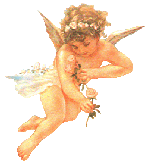Masaccio, Italian Renaissance Painter
|

|
|
Saint Jerome &
Saint John the
Baptist
Masaccio, 1428
National Gallery, London
|
|
Click here
to see our gift
shop.
|
One of the most significant Italian Renaissance painters
is the brilliant artist Masaccio, originally Tommaso Cassai.
Masaccio was born near Florence on December 21, 1401.
Masaccio died a young man in Rome in 1428, only 27 years
old. When Masaccio was 21, he joined the Florentine painter's
guild. Important to Masaccio's development was the
influence of Italian painter, Giotto
di Bondone. Masaccio masterfully used architect Brunelleschi's
innovative device of perspective in his pictorial compositions,
a device not seen in art since antiquity. Masaccio
was further influenced by the sculptor Donatello and Greco-Roman art in the
illusionistic
three-dimensional modeling of his forms. Masaccio rejected the
heavily ornamented style of Byzantine and Gothic art, opting
instead for simplicity.
Vasari tells us that all Florentine painters studied the
frescoes of Masaccio to "learn the precepts and rules for
painting well." Masaccio is credited for introducing
humanism in art. The death of such a
talented, young painter as Masaccio was a great loss to the
art world, something not fully realized until later. It
is rumored that Masaccio's early death was the result of
poisoning by a rival artist who could not compete
successfully with the great artist.
Strongly influenced by Masaccio later was Italian
Renaissance giant, Michelangelo.
Brenda Harness, Art
Historian
- Masaccio's Tribute Money
Masaccio's Tribute Money is revolutionary in his use of perspective, not seen since antiquity, and the forms appearing to being rendered with a single light source.
- Holy Trinity by Masaccio
For the first time since antiquity, we see the full use of Brunelleschi's innovative perspective technique in the fresco of the Holy Trinity by Masaccio.
| 